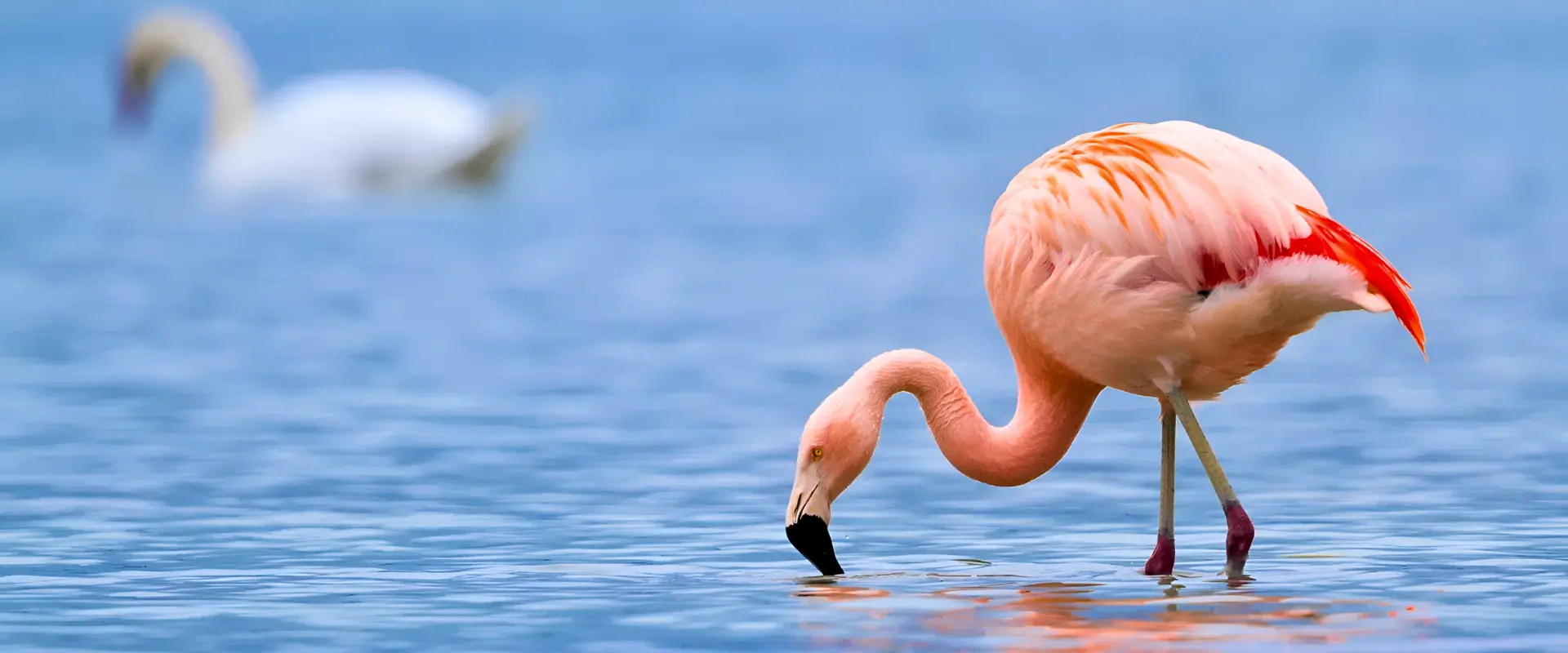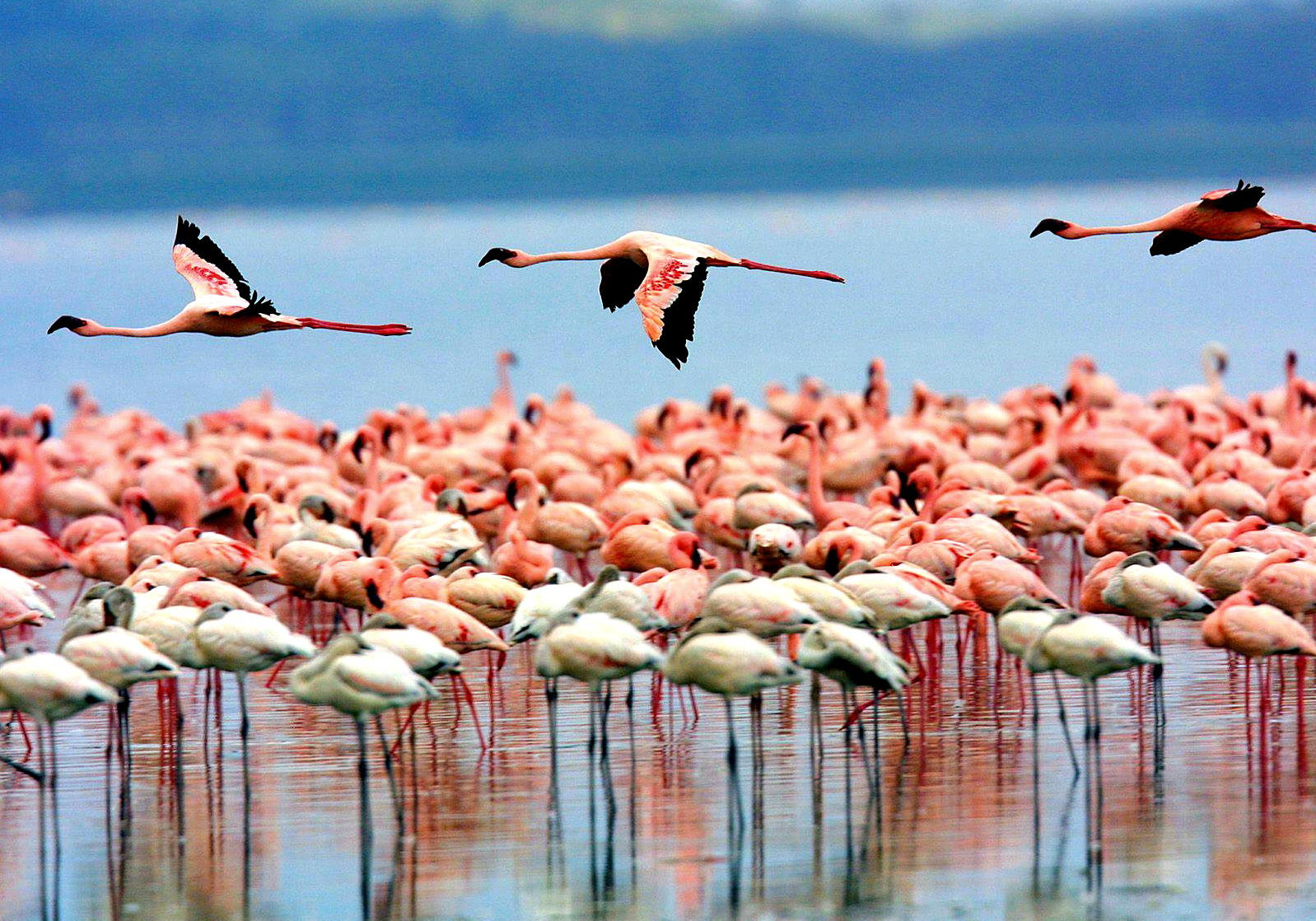Lake Manyara National Park: A Hidden Gem in Tanzania
Lake Manyara National Park, located in northern Tanzania, offers a blend of diverse landscapes, incredible wildlife, and unique natural attractions. Spanning approximately 330 square kilometers, this small yet captivating park is a must-visit for nature lovers and safari enthusiasts.
Why Visit Lake Manyara?
- Diverse Ecosystems: The park features a variety of habitats, including a Rift Valley soda lake, dense woodlands, groundwater forests, acacia-filled plains, and hot springs.
- Tree-Climbing Lions: A highlight of Lake Manyara, these rare lions often perch in the acacia trees, providing a unique wildlife spectacle seen only here and in Uganda’s Ishasha region.
- Birdlife Haven: Home to over 400 bird species, including vibrant pink flamingos, pelicans, storks, and kingfishers, making it a paradise for bird watchers.
- Rich Wildlife: Lake Manyara is renowned for its elephant herds, as well as giraffes, hippos, wildebeests, zebras, buffaloes, and predators like cheetahs and leopards.
- Scenic Beauty: The backdrop of the Great Rift Valley escarpment combined with shimmering waters and lush greenery offers breathtaking scenery.

Key Attractions
1. Lake Manyara
A shallow alkaline lake covering two-thirds of the park, it provides a crucial habitat for flamingos, pelicans, and other aquatic birds. Hippos are frequently seen in its shallows, offering exciting viewing opportunities.
2. Tree-Climbing Lions
These lions are known for their unusual behavior of lounging in trees, which keeps them cool and offers protection from insects on the ground. Spotting them is a unique experience for any safari-goer.
3. Wildlife Encounters
From the massive elephant herds to nimble Kirk’s dik-diks and klipspringers, the park is teeming with wildlife. Troops of olive baboons and vervet monkeys can also be found in the forested areas.
4. Birdwatching
Lake Manyara’s wetlands and alkaline waters attract thousands of birds, making it a hotspot for birdwatchers. The iconic flamingos create a pink hue along the lake’s edge during peak seasons.
5. Maji Moto Hot Springs
These natural hot springs are a fascinating geological feature, perfect for relaxation or exploration during your visit.
Activities
- Game Drives: The park’s road circuit offers excellent opportunities for spotting wildlife in a few hours.
- Birdwatching: Bring binoculars for an up-close view of flamingos, waterfowl, and other migratory species.
- Walking Safaris: Explore the park on foot to experience its diverse habitats up close.
- Canoeing: During the rainy season, canoeing on Lake Manyara offers a unique way to observe hippos and birdlife.
Best Time to Visit
- Dry Season (June to October): Ideal for game viewing as animals gather around water sources and vegetation is less dense.
- Wet Season (November to May): A paradise for birdwatchers with an influx of migratory species, and the landscape turns lush and green.
Getting There
- By Air: Flights are available to Manyara Airstrip from Arusha or Serengeti.
- By Road: Approximately 2 hours from Arusha (126 km). It’s also en route to Ngorongoro Crater and Serengeti National Park.
Accommodation Options
- Luxury Lodges: Offer breathtaking views of the Rift Valley or the lake (e.g., Lake Manyara Tree Lodge).
- Tented Camps: Provide an immersive wilderness experience.
- Budget Options: Guesthouses and lodges in nearby towns like Mto wa Mbu.
Lake Manyara National Park is more than just a stopover; it’s a serene and biodiverse haven perfect for a safari adventure. Would you like recommendations on specific lodges or safari itineraries that include Lake Manyara?

